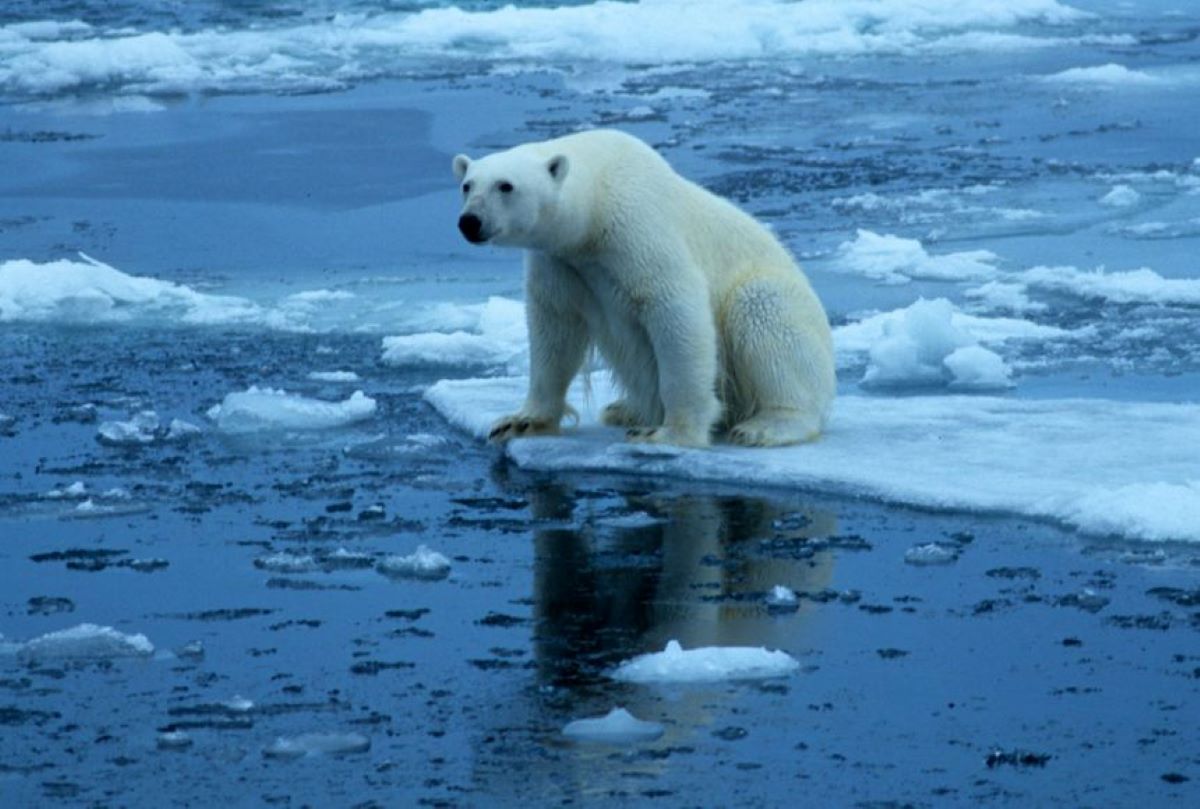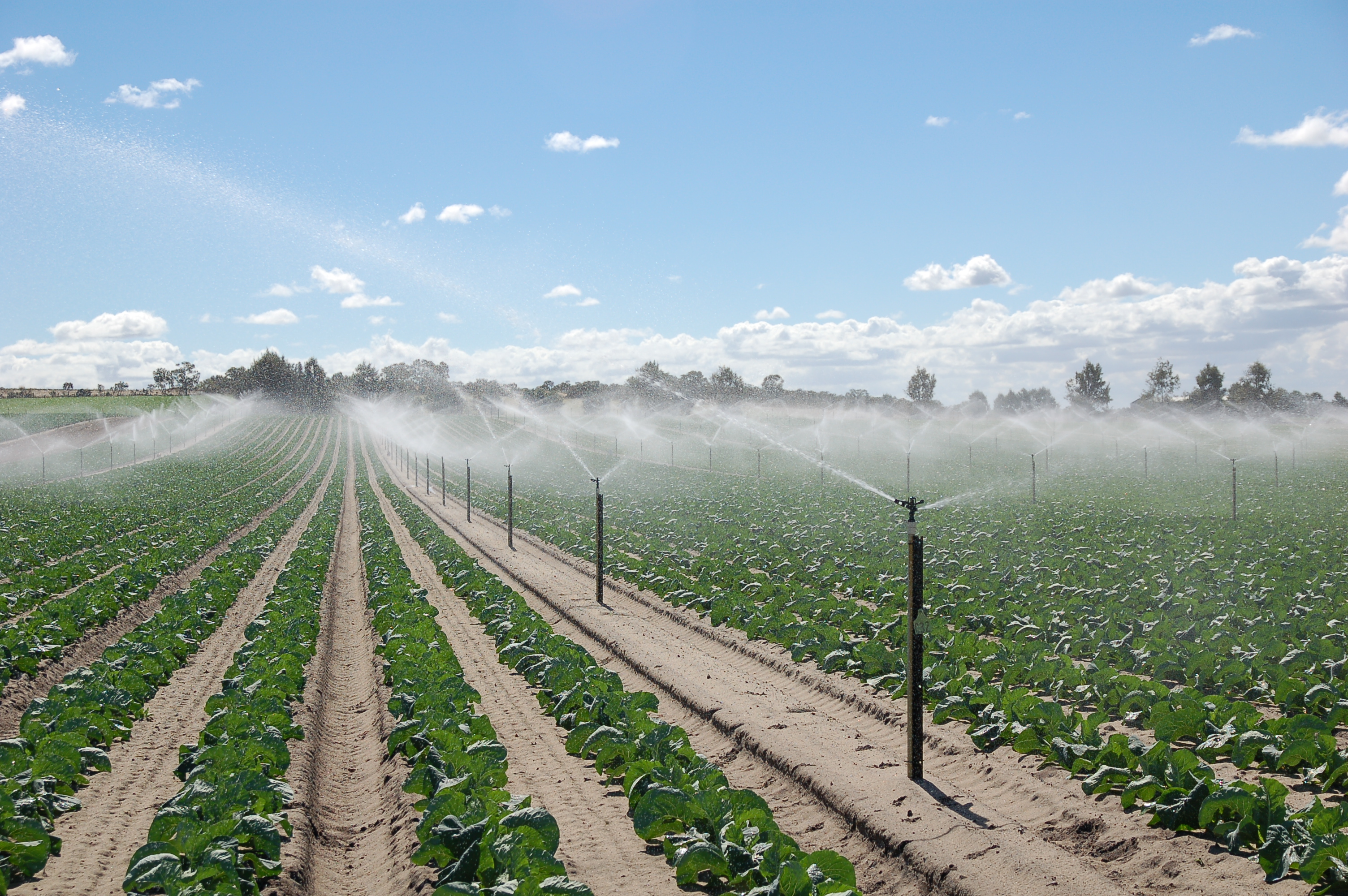Home>Gardening News and Trends>What Effect Does An Increase In Greenhouse Gas Concentration Have On The Energy Budget Of The Earth?


Gardening News and Trends
What Effect Does An Increase In Greenhouse Gas Concentration Have On The Energy Budget Of The Earth?
Modified: January 22, 2024
Discover the latest news on the effect of increasing greenhouse gas concentration on Earth's energy budget. Stay informed on the important role these changes play in climate change and global warming.
(Many of the links in this article redirect to a specific reviewed product. Your purchase of these products through affiliate links helps to generate commission for Chicagolandgardening.com, at no extra cost. Learn more)
Table of Contents
- Introduction
- Greenhouse Effect and Global Warming
- Greenhouse Gas Concentration and Its Impact
- Energy Budget of the Earth
- Effects of Increased Greenhouse Gas Concentration on the Energy Budget
- Enhanced Greenhouse Effect and Its Consequences
- Role of Human Activities
- Mitigation Strategies and Solutions
- Conclusion
Introduction
Welcome to the fascinating world of the greenhouse effect and its effects on the energy budget of our planet. The Earth’s delicate balance is maintained by the energy it receives from the sun and the amount of energy it radiates back into space. However, in recent decades, the increasing concentration of greenhouse gases in the atmosphere has disrupted this balance, leading to significant changes in the Earth’s climate.
The greenhouse effect is a natural phenomenon that helps to regulate the Earth’s temperature by trapping some of the heat radiating from its surface. Greenhouse gases, such as carbon dioxide (CO2), methane (CH4), and nitrous oxide (N2O), act like a blanket, allowing visible light from the sun to reach the Earth’s surface but trapping some of the infrared radiation emitted by the Earth. This trapped energy warms the planet, making it habitable for life as we know it.
However, the burning of fossil fuels, deforestation, and industrial activities have significantly increased the concentration of greenhouse gases in the atmosphere. This enhanced greenhouse effect is causing the average global temperature to rise, leading to a phenomenon known as global warming. The consequences of this warming are far-reaching and include rising sea levels, more frequent extreme weather events, and disruption of ecosystems.
The energy budget of the Earth refers to the balance between the incoming solar radiation and the outgoing longwave radiation. Solar radiation primarily comes in the form of visible light, which heats the Earth’s surface. The Earth then radiates this heat back into space in the form of infrared radiation. The balance between these incoming and outgoing radiations determines the Earth’s overall temperature and climate.
When the concentration of greenhouse gases increases, it disrupts the energy budget of the Earth. The additional greenhouse gases, acting as an extra layer of insulation, trap more heat within the atmosphere. This leads to an energy imbalance, with more energy remaining in the Earth’s system rather than being radiated back into space. As a result, the Earth’s temperature increases, causing global warming.
Human activities play a significant role in driving the increase in greenhouse gas concentration. The burning of fossil fuels for energy, deforestation, and industrial processes release vast amounts of greenhouse gases into the atmosphere. Additionally, agriculture practices, such as livestock farming and rice cultivation, contribute to the release of methane, a potent greenhouse gas.
In the face of this growing challenge, it is crucial to implement mitigation strategies and find sustainable solutions to reduce greenhouse gas emissions. Transitioning to clean and renewable energy sources, promoting energy efficiency, adopting environmentally friendly agricultural practices, and promoting reforestation are some of the measures that can help combat the climate crisis.
In the following sections, we will dive deeper into the effects of increased greenhouse gas concentration on the energy budget of the Earth and explore the consequences of the enhanced greenhouse effect. We will also discuss the role of human activities in driving these changes and examine potential mitigation strategies and solutions.
Greenhouse Effect and Global Warming
The greenhouse effect is crucial for maintaining the Earth’s temperature within a range that supports life. Without it, the Earth would be an inhospitably cold place. However, human activities have significantly amplified this natural process, leading to a phenomenon known as global warming.
When solar radiation reaches the Earth’s atmosphere, some of it is reflected back into space, while the rest is absorbed by the planet’s surface. As the Earth’s surface heats up, it emits infrared radiation. Under normal circumstances, a significant portion of this radiation would escape into space, allowing the Earth to cool down.
However, greenhouse gases in the atmosphere, such as carbon dioxide, methane, and nitrous oxide, trap some of the outgoing infrared radiation. These gases act like a blanket, preventing the heat from escaping. As a result, the Earth’s temperature rises, creating a stable and habitable climate.
The increase in greenhouse gas emissions from human activities since the industrial revolution has intensified the greenhouse effect. The burning of fossil fuels, such as coal, oil, and natural gas, releases large amounts of carbon dioxide into the atmosphere. Deforestation contributes to the issue as well because trees absorb carbon dioxide, so their removal reduces the planet’s capacity to mitigate its own emissions.
Global warming is the long-term consequence of this intensified greenhouse effect. As greenhouse gas concentrations increase, more heat is trapped in the Earth’s atmosphere, causing the average global temperature to rise over time. This phenomenon has severe repercussions for our planet.
One of the most evident impacts of global warming is the melting of glaciers and polar ice caps. As temperatures rise, these frozen expanses of ice begin to melt, contributing to rising sea levels. This not only threatens coastal communities but also alters ecosystems and puts various species at risk of extinction.
Global warming is also responsible for more frequent and intense extreme weather events. Heatwaves, hurricanes, droughts, and heavy rainfall events have become more common, resulting in devastating consequences for both human populations and the environment.
The disruption of natural ecosystems is another consequence of global warming. As temperatures shift, it affects the distribution and behavior of numerous plant and animal species. Many species can’t adapt fast enough and face the risk of habitat loss and extinction.
It’s important to note that global warming is not a localized issue. The impacts of greenhouse gas emissions extend far beyond national borders and affect the entire planet. This crisis demands a global response and concerted efforts to mitigate greenhouse gas emissions, adapt to the changes already occurring, and promote sustainable practices.
In the following sections, we will explore the specific impacts of increased greenhouse gas concentration on the Earth’s energy budget and delve into the consequences of the enhanced greenhouse effect.
Greenhouse Gas Concentration and Its Impact
The concentration of greenhouse gases in the Earth’s atmosphere has been steadily rising due to human activities. This increase in concentration has significant implications for the planet’s climate and overall energy balance.
Carbon dioxide (CO2) is the most prevalent greenhouse gas and the primary driver of global warming. The burning of fossil fuels, deforestation, and industrial processes are the main contributors to its increase. Since the Industrial Revolution, CO2 levels have risen by more than 40% from pre-industrial levels.
Methane (CH4) is another potent greenhouse gas. It is released during the production and transport of coal, oil, and natural gas. Methane is also emitted by livestock and other agricultural practices, as well as by the decay of organic waste in landfills. Although present in much smaller quantities than CO2, methane is approximately 25 times more effective at trapping heat in the atmosphere.
Nitrous oxide (N2O), mainly released from agricultural and industrial activities, is another significant greenhouse gas. While it is less abundant than CO2 and methane, it is around 300 times more potent in terms of its warming potential.
The increase in the concentration of these greenhouse gases leads to a phenomenon called radiative forcing. Radiative forcing refers to the alteration in the balance between the incoming energy from the sun and the outgoing energy radiated by the Earth. As the concentration of greenhouse gases in the atmosphere rises, more of the Earth’s outgoing longwave radiation is absorbed, contributing to an energy imbalance.
This imbalance leads to an increase in the average global temperature, causing global warming. The impacts of this temperature increase are observed across the planet.
Rising temperatures have a profound effect on the Earth’s hydrological cycle, leading to changes in precipitation patterns. Some regions experience increased rainfall, while others face more frequent and prolonged droughts. These changes can have dire consequences for agriculture, water availability, and ecosystem stability.
Furthermore, the increase in greenhouse gas concentration affects ocean systems. As CO2 dissolves in seawater, it leads to ocean acidification, which can have harmful effects on marine life, including coral reefs and shellfish. Warmer oceans also contribute to the bleaching of coral reefs, leading to their destruction.
It is essential to monitor and reduce greenhouse gas emissions to mitigate these adverse effects. Efforts to transition to renewable energy sources, increase energy efficiency, implement sustainable agricultural practices, and protect and restore natural ecosystems are crucial to curbing greenhouse gas emissions and minimizing the impacts of climate change.
In the following section, we will explore the energy budget of the Earth and how the increased greenhouse gas concentration affects this delicate balance.
Energy Budget of the Earth
The energy budget of the Earth refers to the balance between the incoming energy from the sun and the outgoing energy radiated back into space. This delicate equilibrium determines the average global temperature and the overall climate of our planet.
The Earth receives energy from the sun primarily in the form of visible light. This incoming solar radiation, or insolation, is crucial for sustaining life and driving various atmospheric and oceanic processes. Approximately 70% of the solar radiation is absorbed by the Earth’s surface, while the remaining 30% is reflected back into space.
Once the Earth’s surface absorbs the solar radiation, it heats up and radiates heat back into the atmosphere in the form of longwave, or infrared, radiation. This outgoing longwave radiation is essential for keeping the Earth’s temperature in balance.
However, not all of the outgoing longwave radiation escapes into space. The Earth’s atmosphere contains greenhouse gases, such as carbon dioxide (CO2), methane (CH4), and water vapor (H2O), which have the ability to trap some of this radiation. This trapping effect is known as the greenhouse effect.
The greenhouse gases act like a blanket, allowing solar radiation to pass through but preventing a significant portion of the outgoing longwave radiation from escaping. This trapped heat warms the atmosphere and the Earth’s surface, keeping it habitable for living organisms.
In addition to the greenhouse effect, there are other factors that contribute to the energy budget of the Earth. These include the reflection of solar radiation by clouds, aerosols, and the Earth’s surface, as well as the transfer of heat through ocean currents and atmospheric circulation patterns.
The balance between the incoming and outgoing energy determines the average global temperature. If the incoming energy exceeds the outgoing energy, the Earth experiences a positive energy imbalance, resulting in a warming trend. Conversely, if the outgoing energy exceeds the incoming energy, there is a negative energy imbalance, leading to a cooling trend.
It is crucial to maintain this delicate balance to ensure a stable climate. However, the increased concentration of greenhouse gases in the atmosphere disrupts the energy budget of the Earth. The additional greenhouse gases trap more of the outgoing longwave radiation, leading to an energy imbalance and subsequent warming of the planet.
In the next section, we will discuss the effects of the increased greenhouse gas concentration on the energy budget of the Earth and the consequences of the enhanced greenhouse effect.
Effects of Increased Greenhouse Gas Concentration on the Energy Budget
The increased concentration of greenhouse gases in the Earth’s atmosphere has significant impacts on the energy budget of our planet. As these gases trap more of the outgoing longwave radiation, the energy balance is disrupted, resulting in various consequences for the Earth’s climate system.
One of the primary effects of increased greenhouse gas concentration is the warming of the Earth’s surface and atmosphere. As more heat is trapped by the additional greenhouse gases, the average global temperature rises, leading to global warming. This warming trend is evident in rising surface temperatures, melting ice caps and glaciers, and increasing ocean temperatures.
The increased energy in the Earth’s system also influences the hydrological cycle. Warmer temperatures cause more evaporation, leading to an increase in global precipitation. This can result in more intense rainfall events, as well as a higher likelihood of droughts in certain regions. Changes in precipitation patterns can have significant impacts on agriculture, water resources, and ecosystem dynamics.
Furthermore, the increased energy in the atmosphere can affect atmospheric circulation patterns and weather systems. It can lead to changes in wind patterns, the intensity and frequency of storms, and the distribution of rainfall. These alterations in weather patterns can result in extreme weather events, such as hurricanes, heatwaves, and heavy rainfall events.
Another consequence of the disrupted energy budget is the acidification of the oceans. As carbon dioxide dissolves in seawater, it forms carbonic acid, leading to a decrease in pH levels. This acidification has detrimental effects on marine ecosystems, particularly on organisms with calcium carbonate shells and skeletons, such as coral reefs and shellfish. The acidification of the oceans threatens the survival of these organisms and disrupts entire marine food webs.
Additionally, the disrupted energy budget can lead to feedback mechanisms that amplify the effects of climate change. For example, as temperatures rise, permafrost in the Arctic regions begins to thaw, releasing large amounts of methane, a potent greenhouse gas. This release of methane further contributes to global warming, creating a feedback loop.
The consequences of the disrupted energy budget are not only limited to the natural environment but also have socioeconomic implications. Rising sea levels pose a threat to coastal communities, increasing the risks of coastal flooding and erosion. Changes in precipitation patterns can have severe impacts on agriculture, affecting food production and availability. The frequency and intensity of extreme weather events can result in significant economic losses and disrupt infrastructure and livelihoods.
The effects of the increased greenhouse gas concentration on the energy budget of the Earth are complex and wide-ranging. It is crucial that we take swift and decisive action to mitigate greenhouse gas emissions, transition to renewable energy sources, and implement sustainable practices. These efforts are vital in restoring and maintaining the energy balance of our planet and mitigating the consequences of climate change.
Enhanced Greenhouse Effect and Its Consequences
The enhanced greenhouse effect, resulting from the increased concentration of greenhouse gases in the Earth’s atmosphere, has far-reaching consequences for our planet’s climate system and ecosystems. This intensification of the natural greenhouse effect exacerbates the warming of the Earth’s surface and leads to a wide range of impacts.
One of the most significant consequences of the enhanced greenhouse effect is the rise in global temperatures. As greenhouse gases trap more heat within the atmosphere, the average global temperature increases, leading to global warming. This rise in temperature has profound effects on ecosystems, weather patterns, and the distribution of species.
One of the visible impacts of global warming is the melting of ice caps and glaciers. As temperatures rise, ice that has been in place for centuries or even millennia begins to melt, contributing to rising sea levels. This poses a threat to coastal communities and low-lying islands, increases the risk of flooding, and disrupts coastal ecosystems.
The warmer temperatures also create a cascade effect on Earth’s ecosystems. Many plant and animal species rely on specific temperature ranges for their survival and reproduction. As temperatures shift, it can disrupt the timing of migration, blooming, and other critical life cycle events. This disruption can lead to mismatches in ecological interactions and threaten the survival of numerous species.
Changes in precipitation patterns are another consequence of the enhanced greenhouse effect. Certain regions may experience more frequent and intense rainfall, leading to an increased risk of flooding and soil erosion. Conversely, other areas may face more prolonged and severe droughts, which can lead to water shortages, crop failures, and increased wildfire risks.
The increased greenhouse gas concentration also poses a threat to marine ecosystems. As the oceans absorb a significant amount of the excess heat, they become warmer, leading to the bleaching of coral reefs. Coral bleaching occurs when the symbiotic relationship between corals and algae breaks down due to increased stress from temperature changes. This results in the loss of the vibrant colors and essential habitat provided by coral reefs, severely impacting the biodiversity and productivity of marine ecosystems.
Furthermore, ocean acidification, resulting from the dissolution of carbon dioxide in seawater, has detrimental effects on marine life. The increased acidity can hinder shell formation in marine organisms like fish, shellfish, and plankton, leading to potential disruptions in the food chain and ecosystem dynamics.
Aside from ecological impacts, the enhanced greenhouse effect also has socioeconomic consequences. Coastal communities are particularly vulnerable to rising sea levels and more frequent extreme weather events, risking displacement and economic losses. Agricultural regions face challenges such as changing growing conditions, reduced water availability, and increased pest outbreaks, which can impact food security and livelihoods.
Addressing the consequences of the enhanced greenhouse effect requires a multidimensional approach. Reducing greenhouse gas emissions through transitioning to clean and renewable energy sources, promoting energy efficiency, and adopting sustainable practices in agriculture, industry, and transportation are crucial steps. Additionally, efforts to adapt to the changes already occurring and build resilience in communities and ecosystems are necessary for mitigating the impacts.
In the following sections, we will delve into the role of human activities in driving the increased greenhouse gas concentration, explore potential mitigation strategies and solutions, and discuss the importance of collective action to combat climate change.
Role of Human Activities
Human activities play a significant role in driving the increased concentration of greenhouse gases in the Earth’s atmosphere, leading to the enhanced greenhouse effect and global warming. It is crucial to understand the various ways in which our actions contribute to these changes and the importance of addressing them.
One of the primary contributors to greenhouse gas emissions is the burning of fossil fuels for energy production. Coal, oil, and natural gas are the main sources of carbon dioxide (CO2) emissions. Power generation, transportation, and industrial processes heavily rely on these fossil fuels, releasing large amounts of CO2 into the atmosphere. The continued use of fossil fuels without proper mitigation exacerbates the greenhouse effect.
Deforestation also plays a significant role in the increase of greenhouse gas concentrations. Forests act as carbon sinks, absorbing CO2 through photosynthesis. However, widespread deforestation, particularly in tropical regions, reduces the Earth’s capacity to absorb and store carbon dioxide. Moreover, when trees are cut down and burned, they release the stored carbon dioxide back into the atmosphere.
Agricultural practices, especially in the livestock sector, are another significant contributor to greenhouse gas emissions. Livestock farming, mainly cattle, produces significant amounts of methane (CH4), a potent greenhouse gas. Additionally, agricultural activities, such as rice cultivation and the use of synthetic fertilizers, contribute to the release of nitrous oxide (N2O), another powerful greenhouse gas.
Industrial processes, such as cement and steel production, also emit greenhouse gases, primarily CO2. These emissions result from energy consumption during production, chemical reactions, and the use of fossil fuels as raw materials. Reducing emissions from these industries through energy efficiency and cleaner technologies is essential in mitigating climate change.
Human activities not only directly release greenhouse gases but also indirectly contribute to their increase. For example, the rapid growth of transportation systems and urbanization has led to increased energy demand and a rise in carbon emissions. Land-use changes, such as urban expansion and the conversion of natural habitats for agricultural purposes, further contribute to greenhouse gas emissions.
It is important to recognize the interconnectedness of these human activities and their impact on the global climate system. The cumulative effect of our actions has resulted in significant changes to the Earth’s energy budget and climate patterns.
To address the role of human activities in climate change, it is essential to transition to more sustainable practices and reduce greenhouse gas emissions. This includes shifting to renewable energy sources such as solar, wind, and hydroelectric power, as well as improving energy efficiency in all sectors. Encouraging sustainable land-use practices, protecting and restoring forests, and promoting responsible agricultural practices can also play a crucial role in reducing emissions.
Education and awareness about the impact of our actions on the climate are vital in encouraging individuals, communities, businesses, and governments to take action. Collectively, we must work towards sustainable development, implement policies that support emission reductions, and foster international cooperation to address the global challenge of climate change.
Mitigation Strategies and Solutions
Addressing climate change requires a comprehensive approach that includes mitigation strategies and solutions aimed at reducing greenhouse gas emissions. By implementing these measures, we can work towards minimizing the impacts of the enhanced greenhouse effect, mitigating global warming, and fostering a sustainable future.
Transitioning to renewable energy sources is a crucial step in mitigating greenhouse gas emissions. Investing in solar, wind, hydropower, and other forms of renewable energy can significantly reduce our dependence on fossil fuels and decrease carbon dioxide emissions. Governments and businesses should prioritize policies and incentives that encourage the adoption and development of renewable energy technologies.
Promoting energy efficiency is another key solution in reducing greenhouse gas emissions. Improving the efficiency of buildings, transportation systems, and industrial processes can lead to significant energy savings and decreased carbon emissions. This can be achieved through the use of energy-efficient technologies, better insulation, fuel-efficient vehicles, and sustainable manufacturing practices.
Sustainable land management and forest conservation are essential strategies in climate change mitigation. Protecting and restoring forests helps to absorb carbon dioxide from the atmosphere through photosynthesis. Additionally, implementing sustainable agricultural practices, such as agroforestry and organic farming, can reduce emissions from agriculture and promote carbon sequestration in soils.
Reducing emissions from the transportation sector is critical in mitigating climate change. This can be achieved through the promotion of public transportation, the development of electric vehicles, and the improvement of fuel efficiency standards. Investing in the implementation of a robust charging infrastructure for electric vehicles and increasing access to sustainable transportation options can significantly reduce emissions from this sector.
Adopting sustainable waste management practices is another effective mitigation strategy. This includes reducing waste generation, recycling and reusing materials, and implementing waste-to-energy systems. Landfills are a significant source of methane emissions, and reducing methane release can help decrease the overall greenhouse gas footprint.
Educating and raising awareness about climate change is crucial in promoting behavioral changes and individual actions. Encouraging energy conservation, lifestyle changes, and sustainable consumption habits can all contribute to reducing greenhouse gas emissions. Building a culture of sustainability within communities, educational institutions, and businesses is essential for long-term climate change mitigation efforts.
International cooperation and collective action are vital in effectively addressing climate change. The Paris Agreement, a global effort to combat climate change, aims to strengthen international cooperation and establish a framework for countries to reduce their greenhouse gas emissions. Continued collaboration between nations, sharing of best practices, and support for developing countries in their transition to low-carbon economies are critical components of a successful global response.
Mitigating climate change requires a multifaceted and integrated approach. By implementing these mitigation strategies and solutions, we can make significant progress in reducing greenhouse gas emissions, mitigating the enhanced greenhouse effect, and working towards a more sustainable and resilient future.
Conclusion
The increased concentration of greenhouse gases in the Earth’s atmosphere and the resulting enhanced greenhouse effect have had profound impacts on our planet’s climate and energy budget. The consequences of global warming, such as rising temperatures, melting ice caps, extreme weather events, and ecosystem disruptions, highlight the urgent need for action.
Human activities, including the burning of fossil fuels, deforestation, and industrial processes, are the primary drivers of the increased greenhouse gas concentration. Recognizing the role we play in climate change is essential for implementing effective mitigation strategies.
Transitioning to renewable energy sources, improving energy efficiency, and promoting sustainable land management practices are crucial steps in reducing greenhouse gas emissions. Additionally, addressing emissions from the transportation and agricultural sectors, implementing sustainable waste management practices, and raising awareness about climate change are integral to achieving significant and lasting results.
International cooperation, as exemplified by the Paris Agreement, is essential in addressing this global challenge. Continued collaboration, knowledge sharing, and support for developing countries are vital in accelerating the transition to a low-carbon economy and ensuring a sustainable future for all.
The impacts of climate change extend beyond environmental concerns, affecting socioeconomic factors such as food security, water availability, and human health. Building resilience, adapting to changes, and prioritizing equitable solutions are paramount in minimizing the negative consequences of climate change.
As individuals, communities, businesses, and governments, we each have a role to play in mitigating climate change. Through collective action and a commitment to sustainable practices, we can make a significant difference in reducing greenhouse gas emissions, restoring the Earth’s energy balance, and safeguarding the planet for future generations.








